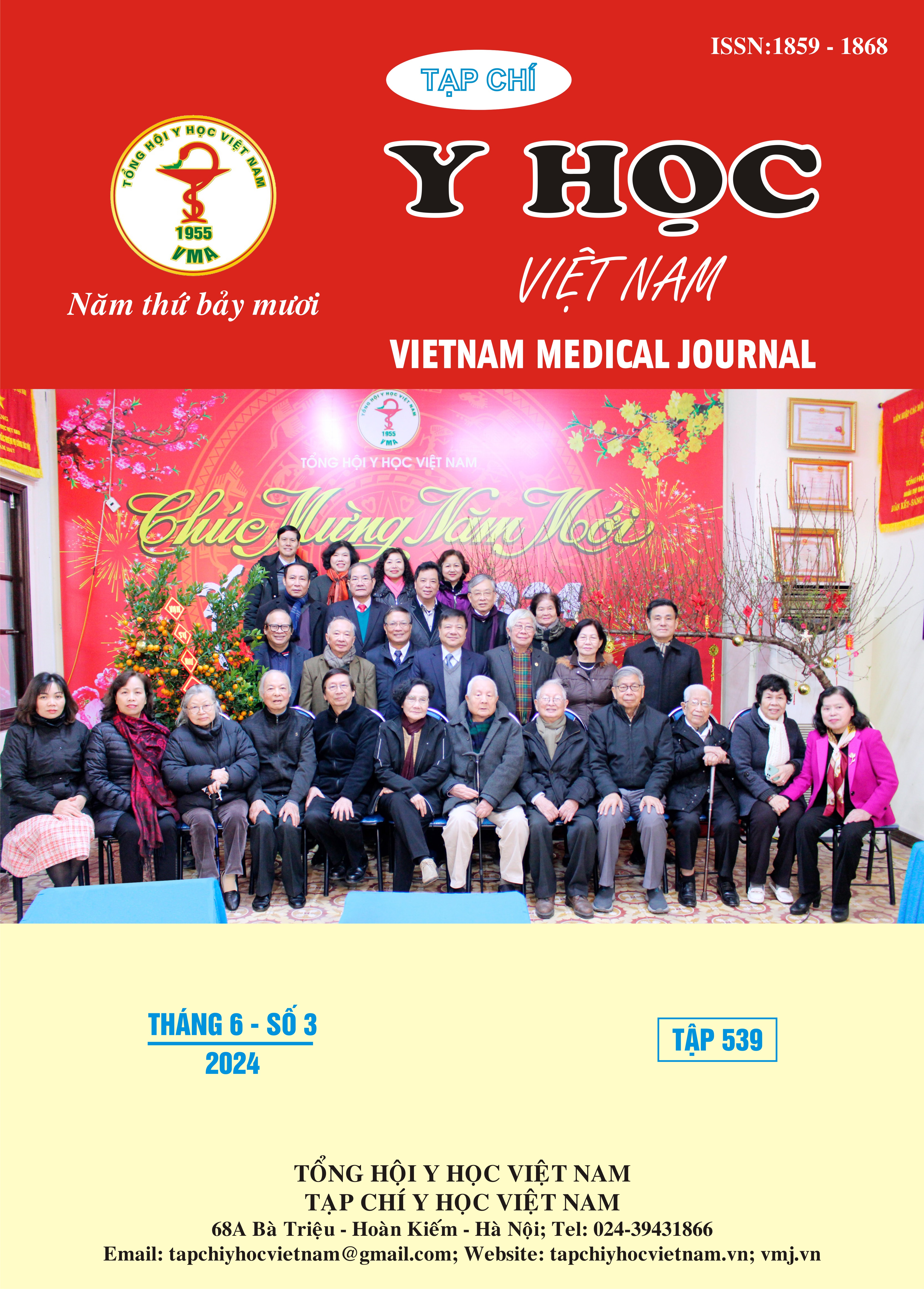STATUS OF ANTIMICROBIAL RESISTANCE OF AEROMONAS SPP. STRAINS ISOLATED FROM MILITARY HOSPITAL 103
Main Article Content
Abstract
Objective: Study the status of antibiotic resistance of Aeromonas spp. strains isolated from Military Hospital 103 in the period from 2014 to 2022. Subject and methods: This was a descriptive study. The subject of the study was Aeromonas spp. strains isolated from Military Hospital 103 in the period from 2014 to 2022. Results: The total number of Aeromonas spp. strains isolated in the period of study was 76. Of which, the percentage of Aeromonas spp. isolated from patients in the age group of ≥60 years was 46.1%. The rate of Aeromonas spp. causing diseases in male (80.3%) was approximately four time higher than that in female (19.7%). Blood and respiratory tract specimens were the two most common specimens that Aeromonas spp. was isolated, accounting for 52.6% and 17.1%, respectively. The percentage of Aeromonas spp. isolated from the internal medicine wards was the highest among hospital wards, at 34.2%. Aeromonas spp. was the most resistant to meropenem (56.4%), trimethoprim/ sulfamethoxazole (39.6%), and piperacillin/ tazobactam (33.3%). By contrast, Aeromonas spp. was the most sensitive to amikacin (93.7%), gentamycin (84.4%). Conclusion: Our study indicated that bloodstream infection and respiratory tract infection were the most popular diseases caused by Aeromonas spp. Aeromonas spp. was the most resistant to meropenem, trimethoprim/ sulfamethoxazole, and piperacillin/tazobactam and most sensitive to amikacin and gentamycin.
Article Details
Keywords
Aeromonas, antibiotic resistance, bacteria
References
2. R. Kaki, A retrospective study of Aeromonas hydrophila infections at a university tertiary hospital in Saudi Arabia. BMC Infect Dis (2023). 23(1), 671.
3. S. Yang, et al., Distinct Antimicrobial Resistance Profiling Of Clinically Important Aeromonas Spp. In Southwest China: A Seven-Year Surveillance Study. Infect Drug Resist (2019). 12, 2971-2978.
4. W. C. Khor, et al., Comparison of Clinical Isolates of Aeromonas from Singapore and Malaysia with Regard to Molecular Identification, Virulence, and Antimicrobial Profiles. Microb Drug Resist (2018). 24(4), 469-478.
5. J. Nolla-Salas, et al., Clinical significance and outcome of Aeromonas spp. infections among 204 adult patients. Eur J Clin Microbiol Infect Dis (2017). 36(8), 1393-1403.
6. Amy L. Leber, Clinical Microbiology Procedures Handbook, . 2016: ASM Press.
7. Clinical and Laboratory Standards Institute, Methods for Antimicrobial Dilution and Disk Susceptibility Testing of Infrequently Isolated for Fastidious Bacteria 3rd ed. CLSI guideline M45. (2015).
8. H. A. Sinclair, et al., Epidemiology of Aeromonas Species Bloodstream Infection in Queensland, Australia: Association with Regional and Climate Zones. Microorganisms (2022). 11(1).


